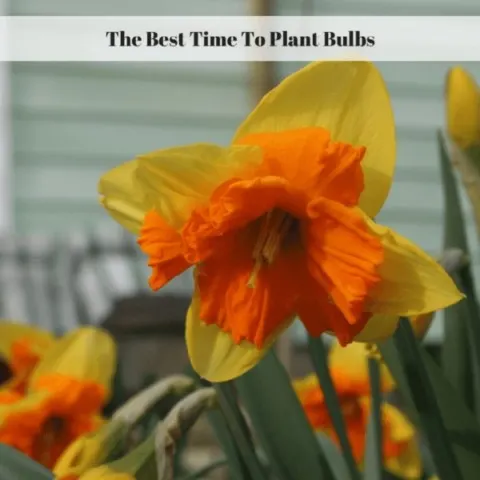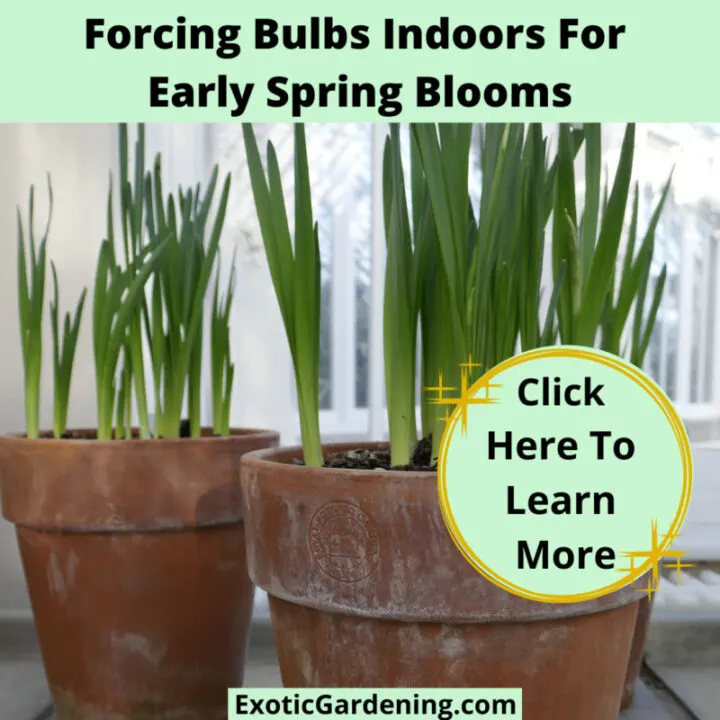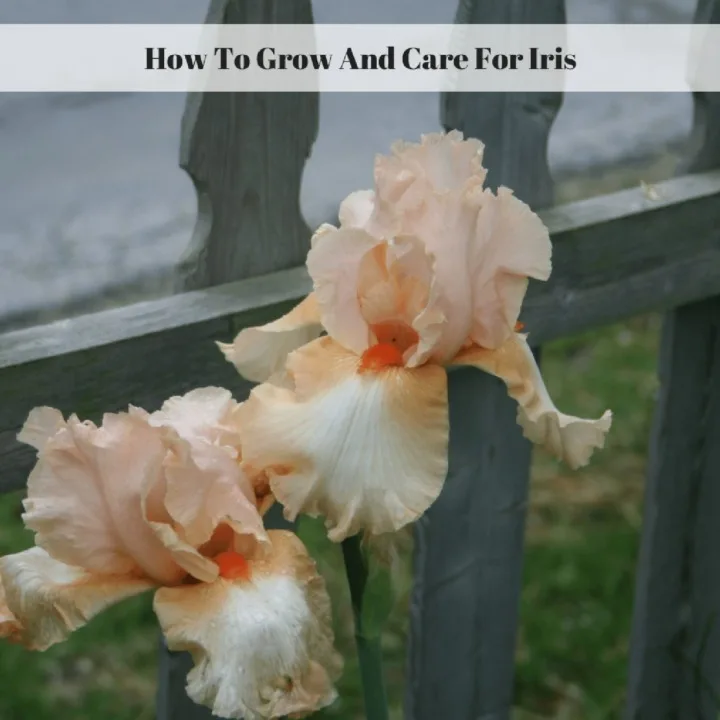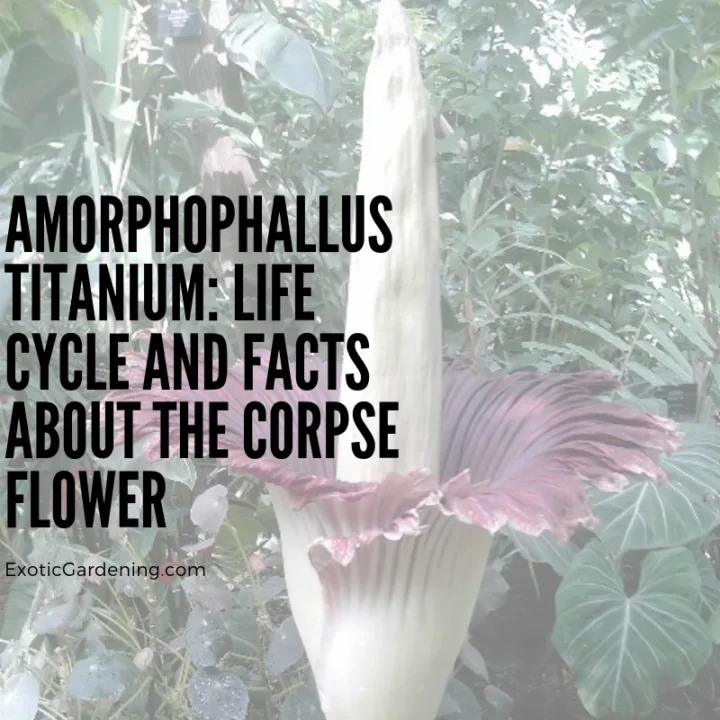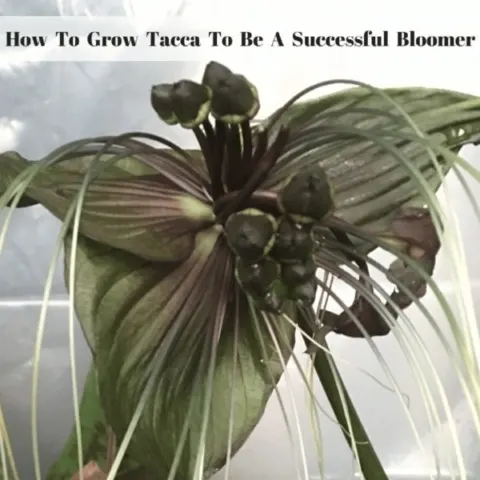Did you know that one way to garden in the winter is by forcing bulbs indoors?
There are a number of bulbs that are easy enough to plant indoors in November and December that will produce flowers February.
Some of these are ideal for making cut flower bouquets, so even without a greenhouse, you can still enjoy or even sell cut flowers in the winter months.
Timing bulbs for blooms in spring before other gardeners have any can be a bit tricky.
Local growers of cut flowers do this on a yearly basis, so it can be done by the home gardener too as long as she has a cold frame, greenhouse or indoor grow room to grow the bulbs in containers that receives adequate light.
Grow lights or even grow tents are just one option for indoor growers who do not have adequate window space.
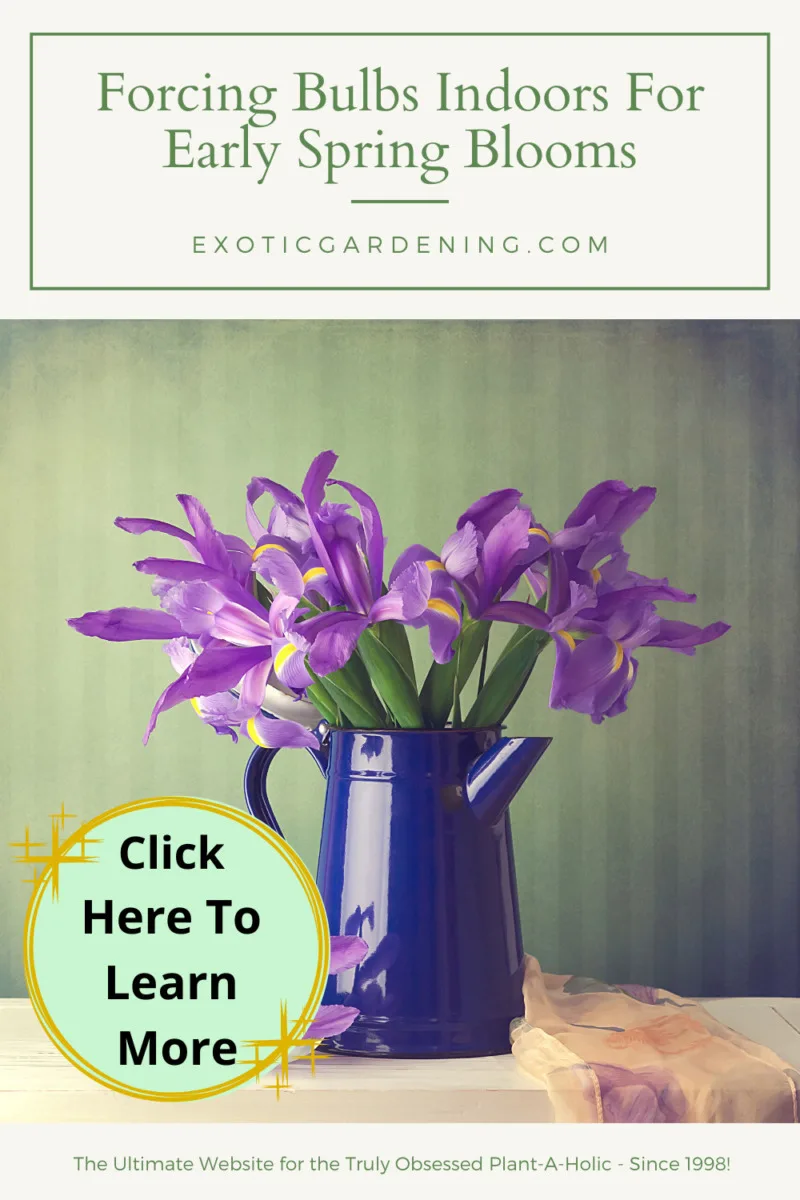
Tips For Transitioning Bulbs Indoors
- Consider the time of year and climate before deciding to force bulbs indoors.
- Choose varieties that thrive in your region if you intend to grow them outdoors after they finish flowering and use a timer to control grow lights.
- Keep the soil or other growing medium moist to prevent drooping leaves and make sure the containers have enough water for the bulbs to thrive.
- Place bulbs in a sunny, warm location with good air circulation. Use a fan to move the air if necessary.
- Remove the foliage once it turns brown.
- Remember, some plants are poisonous so keep your plants away from children and pets.
Getting Bulbs To Bloom Indoors
The first necessity when it comes to getting bulbs to bloom indoors is a place for the bulbs to grow.
To achieve blooms in spring before other gardeners, it is best to start as early as November and continue planting into March of the following year.
A greenhouse or unheated cold frame if you live in a warmer climate and simply need a little more warmth is a good choice, but even without this option, you can set up an area indoors and achieve your desired results.
Gardeners who use a heated greenhouse may find planting in containers is easier because once the flowers have been harvested, the containers filled with foliage can be moved out of the way.
There is no need to dig up bulbs grown in containers as one would do if they were grown in the ground.
Simply let the foliage die back, make sure the soil in the container does not dry out enough to dry the bulb up and set the container in an out of the way place.
When the time comes to encourage the bulbs to re-bloom, simply move the container back into a lighted area and water well.
Sometimes foliage will emerge in the summer months, if this happens, sit the containers outdoors and water as usual.

Bulbs To Plant In November
To get blooms as early as February, one must plant the bulbs in November.
Bulbs planted in November will offer an array of cut flowers from February though May.
Acidanthera bulbs can be planted starting November 1.
Be sure to continue to plant bulbs every few days to make the harvest last longer.
These bulbs will not bloom until the following July.
Anemone bulbs should be planted on the second day of the month.
They will offer the first blooms of the season, often blooming in time for Valentine’s Day.
Iris rhizomes planted on the third day of November will bloom in April.
Triteleia bulbs should be planted on the fourth day of November to ensure blooms in May.
Bulbs To Plant In December
Iris can be planted as late as December first.
Remember that the earlier you plant them, the earlier they will bloom.
Succession planting of Iris rhizomes from the third of November through the beginning of December will offer a succession of longer blooms in spring.
As with Iris, Triteleia can be planted every few days or even once a week, for a succession of blooms in spring.
December planted triteleia will bloom in May.
Anemone is another bulb that can be succession planted from the second day of November through the second Monday of December.
Remember this though, the earlier you plant, the earlier they will bloom.
Later planted bulbs will bloom later in the month, so plan accordingly.
Ranunculus bulbs should be planted on the second Wednesday of December.
Stocks, while not a bulb, make a great cut flower for Mother’s Day.
To make sure they are in bloom for Mother's Day, make sure to plant young stocks on the 15th of December.
The last bulb to plant in December is freesia.
This should be planted on December 16th.
Keep in mind that a variety of bulbs can be planted in November and December for early blooms in spring.
Do not feel limited by the bulbs mentioned here.
Try other bulbs as well, but be sure to keep records of how each bulb performed for future reference.
Forcing Bulbs Indoors Isn't New
Forcing bulbs indoors is nothing new.
Gardeners have been doing this for a long time.
Knowing what to plant and when, especially if you are not a cut flower grower, is the key to success.
While the ideal place to plant these is in a heated greenhouse, by using a southern facing window, supplementing the light with grow lights or using a grow tent, success can be achieved indoors.
Bulbs and Rhizomes
Dive into the fascinating world of bulbs and rhizomes with our curated collection of blog posts! Whether you're a seasoned gardener or just starting your journey, you'll find everything you need to plan, plant, and care for these stunning plants. From classic spring favorites like tulips and daffodils to summer showstoppers like gladiolus and cannas, our posts cover a wide variety of blooms to suit any garden style.
Learn how to choose the best bulbs and rhizomes for your region, plant them at the right time, and care for them season after season. With expert tips on soil preparation, watering, and pest resistance, you’ll be equipped to create a garden that’s vibrant and thriving.
Explore the endless possibilities and let these versatile plants bring bursts of color and texture to your garden year-round. Start planning your dream garden today!
Daylilies: Attractive, Colorful, Easy To Grow Garden Gems
Daylilies are popular garden plants that are colorful, easy to grow and multiply rapidly. They are also drought tolerant.
Worselya rayneri Culture And Propagation
Learn how to grow, flower and propagate the endangered plant, commonly known as the Empress Of Brazil, Worseyla rayneri.
How To Grow Amaryllis
Learn how to grow Amaryllis from seed as well as how to care for your Amaryllis plant indoors and what to do with it after flowering.
Bulbs to Plant In January: Get a Head Start on Cut Flower Production
Plant bulbs in January in a heated greenhouse to get a head start on cut flower production. Then interplant herbs, vegetables and annuals.
Spring Flowering Bulbs: The Cutting Garden
Plant spring flowering bulbs in the greenhouse or even indoors in February and March for gorgeous blooms in spring or mid-summer.
Blooming Brilliance: Mastering Spring-Flowering Bulbs in Hot Climates
Discover the secrets of coaxing bulbs to bloom in hot climates. Get expert tips for vibrant, resilient floral displays.
Brighten Your Garden This Spring With Miniature Daffodils
Brighten your garden this spring with miniature daffodils! Discover their vibrant colors, unique varieties, and easy-care charm.
How To Grow And Care For The Albuca Species
Learn how to grow and care for the Albuca species. While most people start with a live plant, seed starting information is also included.

